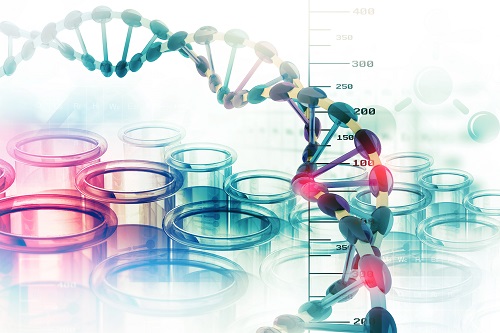Now, small interfering RNA (siRNA) has become the method of choice for mammalian cell genetic analysis and has the potential to be used as a treatment for a variety of cancers, acquired and inherited diseases. Here, we describe four methods for generating siRNA for mammalian RNAi experiments, each of which has its advantages and disadvantages. The best way to generate siRNA depends on the purpose of the experiment. We will discuss the types of applications that suit them best.

Related Services from BOC RNA
| Services | Price |
| siRNA Services | Inquiry |
| siRNA Sets | Inquiry |
Related Products from BOC RNA
| Product | Price |
| siRNA Products | Inquiry |
Chemically synthesized siRNA represents the gold standard for RNAi applications. It has a uniform composition, can be synthesized in a higher amount and has a wider range of chemical modifications than siRNA synthesis by other methods. It can be produced and even chemically modified in a controlled manner according to the exact sequence required for the research.
Chemical synthesis methods allow the integration of modifications into the backbone and/or RNA bases to improve siRNA target specificity, stability in the presence of nucleases, and chain loading characteristics. The disadvantages of chemically synthesis of siRNA include a higher cost and increased synthesis time.
Research that needs a lot of defined ultrapure siRNA sequences
Research that needs long-term gene knockdown
| Services | Price |
| siRNA Design Services | Inquiry |
| Custom siRNA | Inquiry |
| Custom Chimera siRNA | Inquiry |
| Custom Piwi Interacting RNA | Inquiry |
| Custom Chemically Modified siRNA | Inquiry |
| siRNA Screening Services | Inquiry |
siRNA can be easily prepared by in vitro transcription. The production of siRNAs by in vitro transcription is more economical and time cost-effective than its chemical synthesis. Disadvantages of this method include its limited potential for scale-up (although each reaction produces enough siRNA for hundreds of transfections), and requiring more hands-on time than chemical synthesis method, which can be easily purchased.
Research that needs a lot of defined ultrapure siRNA sequences
| Services | Price |
| In Vitro Transcription Service | Inquiry |
Research that needs long-term gene knockdown
The siRNA expression cassette (SEC) is a PCR-derived siRNA expression template that can be directly introduced into cells-without first cloning into a vector. SEC includes the RNA pol III promoter, the sequence encoding the siRNA hairpin, and the RNA pol III termination site. siRNA expression vectors need to be cloned and sequenced before use, so the preparation takes 1-2 weeks, while SEC can be generated by PCR in less than a day.
The disadvantages of this method include the difficulty of PCR amplification due to the secondary structure of the hairpin, and the inability to efficiently transfect DNA into cells due to the lack of a selectable marker cassette.
Long term research and other studies in which antibiotic selection of siRNA containing cells is desired.
Screening siRNA sequences (using vectors to screen siRNA sequences is time-consuming and labor intensive).
| Services | Price |
| Custom PCR Primer Synthesis | Inquiry |
siRNA-mediated down-regulation of gene expression is short-lived, usually only lasting 3-5 days in cell culture. Although this may be sufficient for many applications, for the study of proteins with longer half-lives, a single transfection of siRNA may not provide a sufficient window of functional failure. Moreover, the transient transfection efficiency of siRNA is not ideal or stable when dealing with cell lines that are difficult to transfect. The solution to this problem is to stably express siRNA from plasmids or viral vectors. The use of viral vectors, such as lentivirus and adenovirus, allows easy generation of transgenic cells and even difficult to transfect. Vector-based siRNA also allows for co-expression of reporter genes, such as GFP or luciferase, which helps to track and/or select/enrich transfected/transduced cells.
Screening siRNA sequences and testing promoters before preparing vectors
Long term studies
| Services | Price |
| shRNA plasmid expression vector | Inquiry |
siRNA (small interfering RNA) is a short double-stranded RNA that guides the RNA-induced silencing complex (RISC) to degrade complementary mRNA, enabling precise and transient knockdown of target genes.
siRNA can be generated via chemical synthesis, in vitro transcription, PCR-derived expression cassettes, or vector-based systems, each offering unique advantages for different experimental requirements.
Chemical synthesis enables incorporation of base or backbone modifications to enhance stability, target specificity, and cellular uptake, providing highly defined siRNA for consistent gene silencing.
PCR-derived siRNA templates can be directly introduced into cells without cloning, offering rapid production for long-term studies, antibiotic selection, or experiments requiring stable siRNA expression.
Difficult-to-transfect cells can be targeted using vector-based systems, viral vectors, or chemically modified siRNA with enhanced uptake, ensuring robust and reproducible gene knockdown.
Yes, siRNA libraries and screening services enable systematic knockdown of multiple genes, supporting functional genomics, pathway analysis, and target validation across diverse cell models.
Ref: